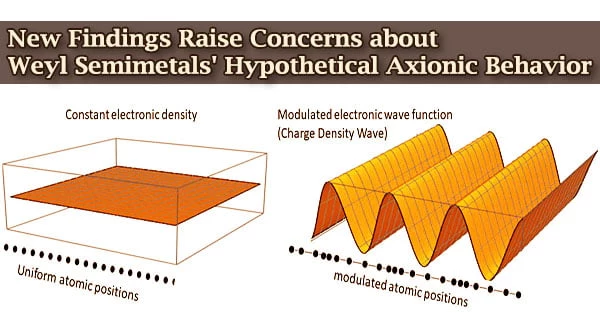For decades, scientists have speculated about the existence of the axion. It has gotten a lot of interest in recent years because of its possible role in dark matter. However, their very existence is under question.
An experimental approach for establishing the existence of an axionic behavior in specific materials, according to Russian and French researchers, may not have found it as previously reported.
The multinational team reported in Applied Physics Letters that they were unable to identify the expected higher magnetoconductivity in the charge density wave of (TaSe4)2I, a tantalum, selenium, and iodine combination.
The findings come three years after an article in Nature appeared to provide sufficient evidence for an axionic behavior using a similar approach.
“A null result, as we report, is in its own an interesting result,” said co-author Pierre Monceau. “The nonreproducibility in the results could be the source of a controversy but, more importantly, may open a scientific debate to uncover experimental ways for investigating this new field.”
In the 1970s, the concept of an axion was proposed in particle physics to explain why the strong nuclear force does not display parity violation. Such a violation would have resulted in the neutron having an electric dipole moment, which has yet to be observed experimentally.
A null result, as we report, is in its own an interesting result. The nonreproducibility in the results could be the source of a controversy but, more importantly, may open a scientific debate to uncover experimental ways for investigating this new field.
Pierre Monceau
The way the axion couples to its electromagnetic field is proof of its existence. It was recently proposed that electrons in Weyl semimetals, a model for condensed matter that includes (TaSe4)2I, undergo a similar interaction. These electron interactions can cause a charge density wave under the correct circumstances.
If electrons with spiral-like behavior mirror one other in a magnetic field, charge density waves can take on axionic features. An increase in a wave’s magnetoconductivity is the crucial discovery that suggests this.
The proper conditions are achieved by (TaSe4)2I’s structure, which can segregate electron states based on their helix formation.
“Our surprise was to detect no effect in the conductance in a magnetic field,” Monceau said. “We think that, given the lack of further evidence, it is premature to assert that (TaSe4)2I harbors an axionic charge density wave.”
Charge density wave excitations, according to Monceau, may exhibit axionic properties that can be exposed through appropriate experiments, such as detecting nonlinear dynamics in a magnetic field along the charge density wave.
The researchers believe that the findings will encourage others to develop new techniques for proving the existence of axion counterparts in condensed matter.





